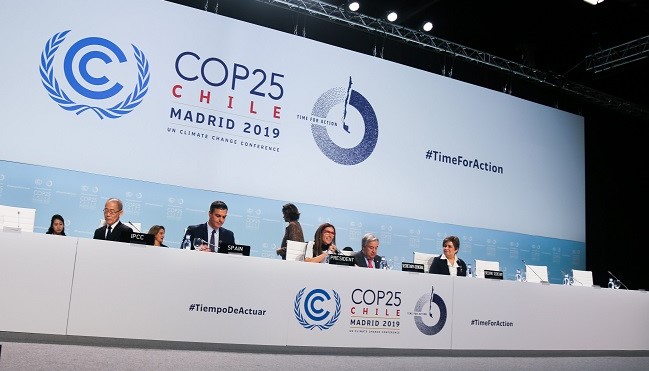Six countries launched their NDC Partnership Plans at an NDC Partnership side event that took place during the 25th session of the Conference of the Parties (COP25) to the UN Framework Convention on Climate Change (UNFCCC) held last December in Madrid, Spain.

Ministers and high-level representatives from Burkina Faso, Jordan, Lebanon, Pakistan, Seychelles and Zimbabwe showcased their climate leadership efforts, shared stories and best practices, highlighted gaps in support, and discussed requirements to achieve their climate objectives and the SDGs.
Grenada’s minister shared his country’s experience in developing its previously submitted NDC Partnership Plan.
During the event that held on December 9, 2019, representatives from the UK and Germany also expressed their commitment to help countries implement their Nationally Determined Contributions (NDCs) and raise ambition.
Burkina Faso’s minister said development of his country’s Partnership Plan began in early October 2019 with a multi-sectoral consultation meeting to review and identify national and sectoral priorities. The government outlined six components for consideration, including capacity building, mitigation, adaptation, progress reporting, financing and communication. He noted that 10 partners are interested in providing support for Burkina Faso’s NDC implementation.
Jordan’s minister outlined Jordan’s NDC Action Plan, which includes the energy, water, health, agriculture and transport sectors, noting that by 2020, 20% of Jordan’s energy is expected to be generated from renewable resources.
The minister described government-led Sector Working Groups, which identified each sector’s interventions and transformational pipeline projects based on emission reduction potential, sustainable development benefits, implementation readiness, and degree of alignment with national development priorities.
Zimbabwe’s representative said her country’s Partnership Plan outcomes include: local climate change mainstreaming; capacity strengthening for climate finance; reducing water vulnerability; engaging micro, small and medium-sized enterprises; increasing the adoption of low-carbon and clean technologies; scaling up climate-smart agriculture; and strengthening early warning systems.
Twenty-seven partners are involved in implementing the Plan, she noted, with financial contributions of $23 million.
Seychelles’ representative informed the participants that her country’s Partnership Plan focuses on: the energy and transport sectors; monitoring, reporting, and verification (MRV); national and international climate finance; adaptation planning and climate resilience; adaptation and institutional capacity; and the blue economy and blue carbon (seagrass mapping).
Pakistan’s representative shared that his country’s Partnership Plan was developed through a whole-of-society and participatory approach and prioritises eleven investment areas to promote a low-carbon and climate-resilient development pathway. Plan outcomes include: increasing the renewable energy share and energy access in underserved areas; scaling up low-carbon and climate-resilient land management practices in the agricultural and forestry sectors; and establishing climate-resilient “green” eco-industrial parks.
Lebanon’s minister said Lebanon is still finalising its NDC Partnership Plan. The country is working with the NDC Partnership and sectors such as energy, waste, transport, forestry, water and agriculture on consultations, to form the basis of the Plan.
Lebanon will also be receiving the Partnership’s Climate Action Enhancement Package to help the country establish a Green Financing Facility.
NDC Partnership Plans are used for coordination, planning, transparency, progress tracking and resource mobilisation for NDC implementation. They match country needs for NDC implementation with resources from Partnership members and international stakeholders to create a results-based action plan that is country-owned.
While country contexts and needs vary, according to the NDC Partnership website, all the Plans have a common operational framework.
By Leila Mead, Thematic Expert for Climate Change and Sustainable Energy (US), SDG, Knowledge Hub
